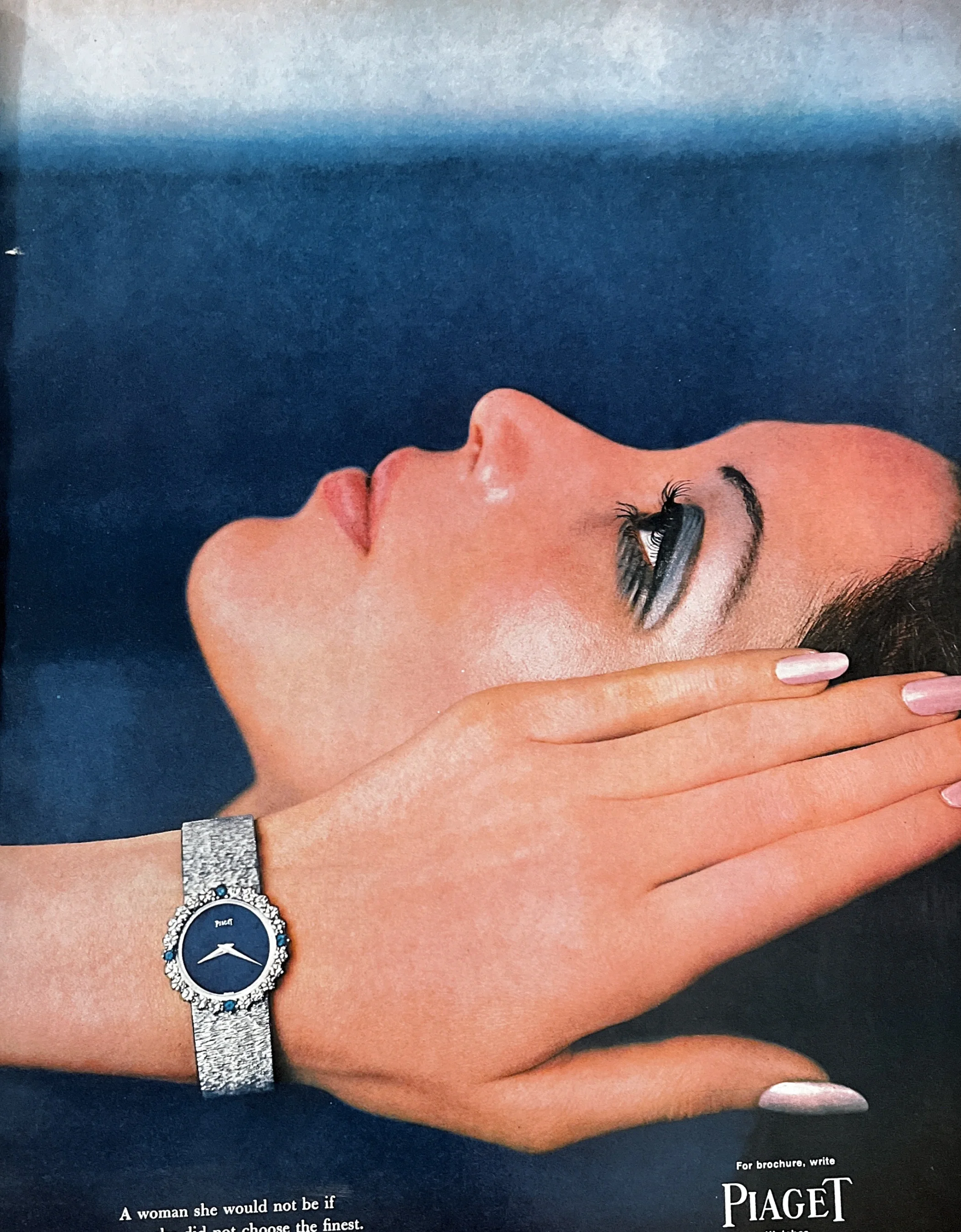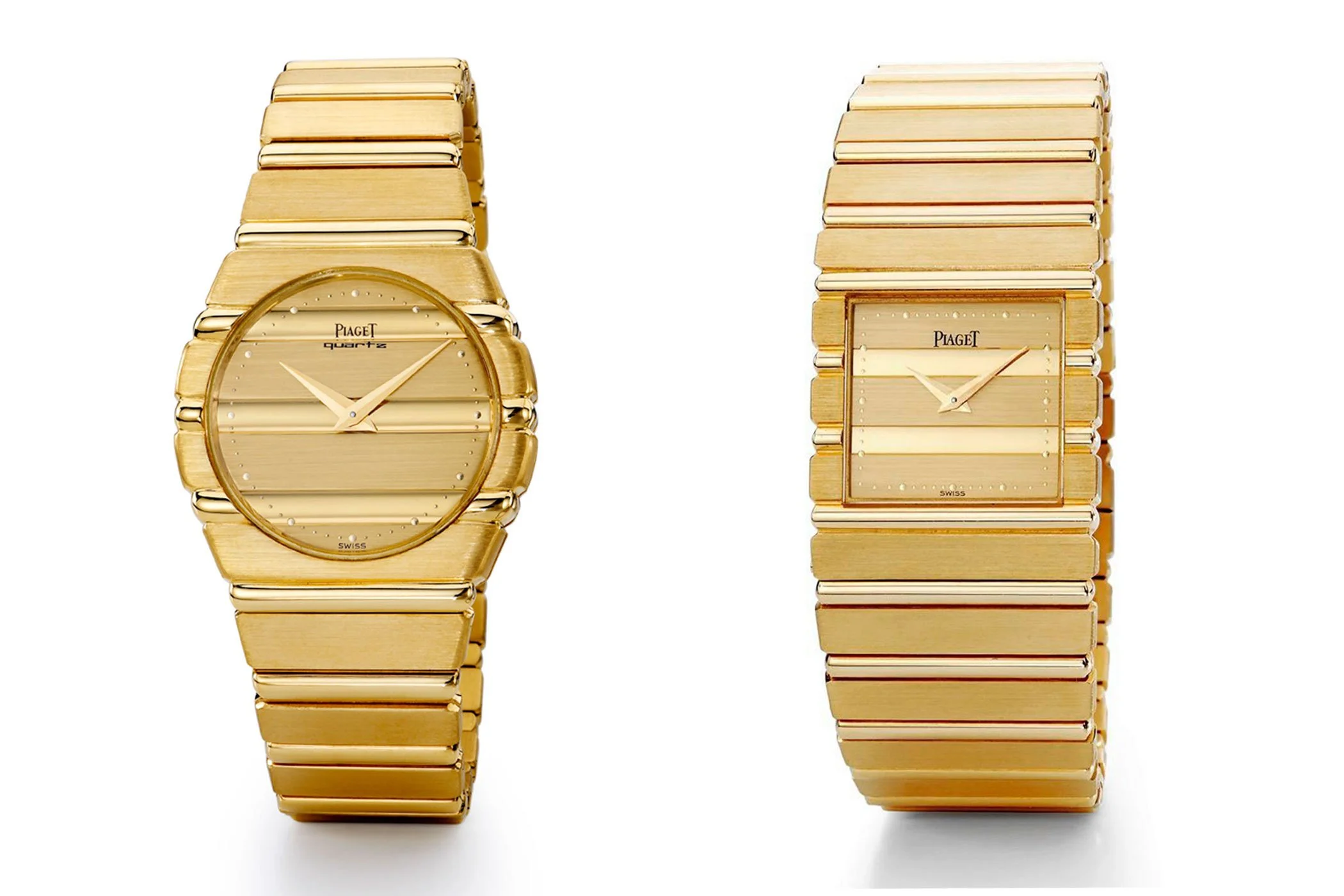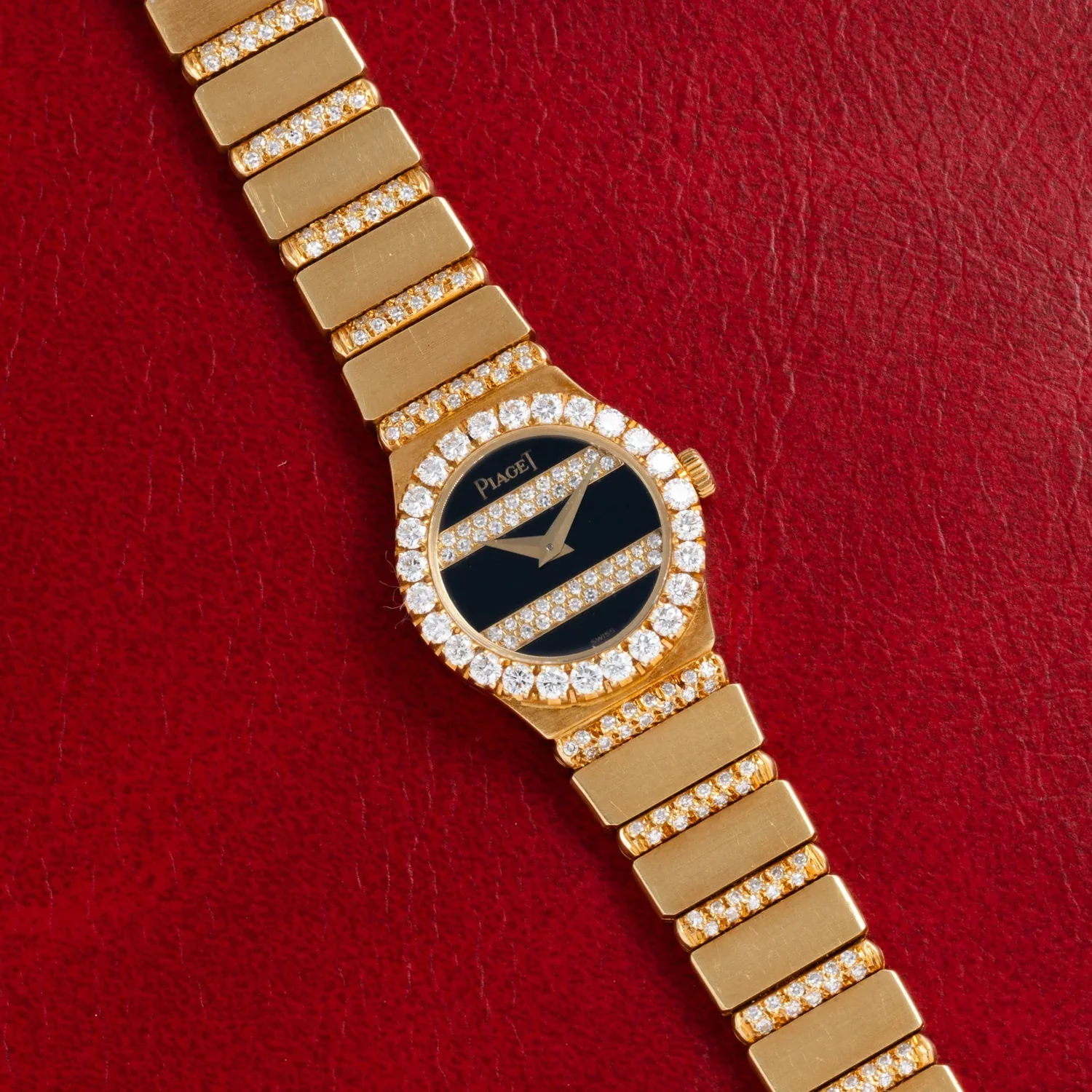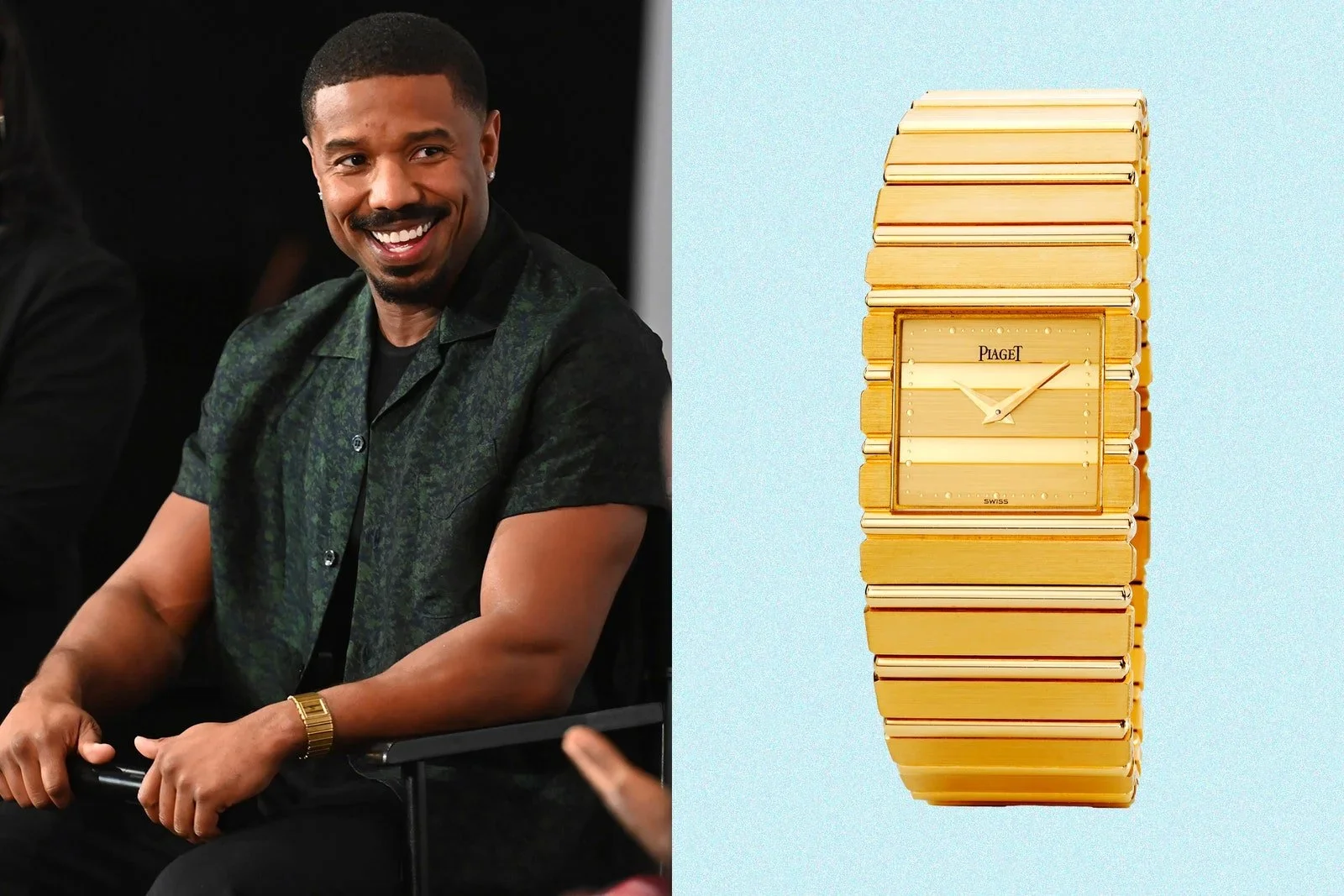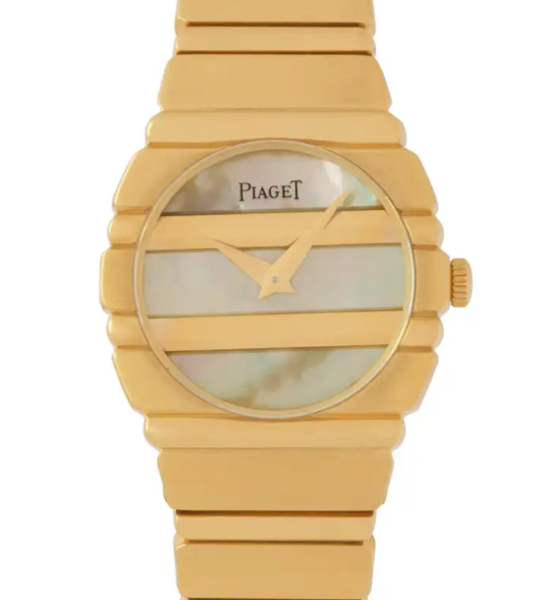Piaget Polo 79: The Shining Comeback of a Collector Icon
In 1979, while the luxury-sport watch scene was ruled by the brushed-steel Royal Oak and Nautilus, Piaget dared to go against the grain: a wristwatch crafted entirely in gold—a seamless fusion of watchmaking and jewelry. An emblem of the glamorous 1980s and of the “Piaget Society,” the 18-carat Piaget Polo was heralded as the most elegant sport watch of its era. As Yves G. Piaget famously declared, it was “a bracelet-watch, not a watch with a bracelet.”
Nearly half a century later, the legend is reborn. In 2024 Piaget reintroduced the Polo 79 in yellow gold, rekindling the hedonistic spirit of its time and igniting fresh demand among collectors. A year later a white-gold re-edition followed, ensuring no taste was left unsatisfied.
From a Mountain Workshop to the Jet Set
Piaget began humbly in 1874, when Georges-Édouard Piaget set up a precision-watchmaking workshop on the family farm in La Côte-aux-Fées. Over the decades the maison evolved from discreet movement manufacturer to international jeweler-watchmaker, closely tied to the worlds of art and fashion. Designers were dispatched to Paris couture shows, cultivating a style rather than mere products—people wore Piaget the way they wore Chanel.
By the 1950s the brand had become synonymous with sophistication and innovation, pioneering ultra-thin calibres and dazzling dials of engraved precious metals and vibrant stones such as turquoise, jade, and lapis lazuli, often adorned with the signature Décor Palace finish.
A Bold Counter-Move in the 1970s
In the late 1970s the U.S. market demanded a new kind of luxury sport watch. While Rolex, Patek Philippe, and Audemars Piguet championed steel, Yves Piaget chose a different path: a sports watch in solid gold—true to the maison’s enduring elegance. Aligning the brand with polo, the sport of kings and international jet-setters, Piaget found the perfect stage.
The Polo debuted as Reference 761C701 at the 1979 Palm Beach Polo World Cup on the wrist of Bond girl Ursula Andress: a slim, water-resistant, shock-proof gold timepiece with an integrated bracelet, immediately christened “Polo by Piaget.”
Design Manifesto
Name & Concept
Piaget originally resisted model names, but its American agents insisted. Given the brand’s sponsorship of the Palm Beach Polo World Cup, “Polo” became the perfect moniker for a watch designed to accompany the sport of kings.
Seamless Architecture
The Polo’s design was revolutionary. The case and bracelet form a continuous sculptural whole: no external lugs, no applied bezel, only an uninterrupted rhythm of polished and satin-finished gadroons that catch the light like jewelry. Each bracelet link was individually milled from 18-carat gold to maintain perfect alignment, creating the illusion of a single, flowing block of metal. Even the crown was hidden on the underside of the case to preserve the watch’s sleek symmetry.
Ultra-Thin Engineering
Piaget 7P quartz calibre
a record-breaking 3.1 mm slim produced in 1976
Inside, Piaget installed the 7P quartz calibre (1976), a record-breaking 3.1 mm thick, followed by the even thinner 8P (1.95 mm) for smaller models—technical feats that allowed the Polo to remain impossibly slim despite its solid-gold construction.
Round or Square—Collectors’ Debate
Both round (ref. 7661, 34 mm) and square (ref. 7131, ~25 mm) versions debuted in 1979, joined by smaller companions (refs. 761, 8131). The square version best expresses the “bracelet-watch” ideal, its geometry letting the gadroon motif wrap seamlessly around corners. Yet in today’s market the round 7661 is surprisingly rare despite lower production numbers.
Vintage Piaget Polo ref 7661 & ref 7131.
Variants & Customization
Most Polos (roughly 95–98 %) were quartz, but Piaget also produced a minuscule run of mechanical versions (refs. 14661, 561, 5131).
According to Piaget’s internal records, only around ten automatic pieces have been officially registered worldwide, making them near-mythical in the brand’s archives and at auction. Only a handful have surfaced publicly, each igniting fierce bidding wars.
Collectors could personalize their Polos with onyx, lapis, mother-of-pearl, turquoise, red jasper, or full diamond pavé dials. Reference suffixes signaled bracelet décor—C701 for plain gold, C705 for diamond-set gadroons, C715/C725 for diamond links, and so forth. Many bespoke orders flowed through London’s Asprey to Middle Eastern clients, further limiting standardized production.
The renaissance: Piaget Polo 79
For Piaget’s 150th anniversary in 2024, the Polo 79 returned in triumphant form. The new model grows from 34 mm to a modern 38 mm, weighs a solid 200 grams of gold, and houses the ultra-thin automatic calibre 1200P1, visible through a sapphire caseback and water-resistant to 50 m. Prices remain as bold as ever: €83,000 in yellow gold and €91,500 in white gold, echoing the watch’s original positioning as the most expensive sports watch of its day—once double the price of a Rolex Day-Date.
““The important thing is not to look back, but to ensure coherence between the past and the present in order to celebrate the richness of the Piaget universe” ”
Piaget Polo 79 in gold and white gold.
The Collector’s Market: Rising Demand
Today, Piaget’s vintage pieces are enjoying renewed attention among younger collectors, drawn to their bold use of precious metals and colorful stones at still-attractive prices.
It is not uncommon to source a diamond-bezel Piaget for under €4,000, a compelling option for an elegant evening jewelry-watch.
However, Piaget Polo vintage models have consistently maintained higher valuations than most other Piaget designs, and since the launch of the modern Polo 79 re-edition, prices for vintage Polo references have clearly begun to rise.
The original production of the Piaget Polo—estimated at only a few thousand pieces—is highly coveted by collectors. Because each watch contains a hefty amount of gold, many have been melted over the years, shrinking the surviving population even further.
Sizing was bespoke, so finding a full-link bracelet in untouched condition is a small miracle.
Early 1979–85 examples in pristine, unpolished condition trade between €18,000 and €30,000, with box-and-papers sets commanding a 30–40 % premium.
Any automatic Piaget Polo example can easily exceed these ranges. Only a handful have surfaced publicly, each igniting fierce bidding wars at auctions. The most sought-after model among collectors today is the white-gold automatic Polo.
Adding to this momentum, celebrity interest has reignited, with icons like Michael Jordan recently spotted wearing his square Piaget Polo. Such visibility not only reinforces the watch’s cultural relevance but also fuels demand in today’s collector market, proving the Polo remains as much a status symbol now as it was in 1979.The Polo instantly captivated the international elite: Andy Warhol, Miles Davis, Björn Borg and, of course, Ursula Andress all wore it as a badge of effortless luxury. But by the early 1990s the “bling” aesthetic yielded to minimalist steel, and the Polo slipped quietly from boutique windows into the safes of devoted owners.
Michael B Jordan wears a Piaget Yellow gold Polo Piaget 7P ultra-thin quartz movement from 1979 @GQ
Our vintage selection at 1st DIBS:
Collector Takeaway
Pairing a pristine vintage Polo with the 2024 re-edition offers the best of both worlds: the romance of the original “bracelet-watch” and the everyday reliability of modern Piaget engineering. With vintage supply permanently finite—and only about ten mechanical pieces confirmed by the maison itself—the Polo remains one of the most seductive and undervalued icons of late-20th-century design.





